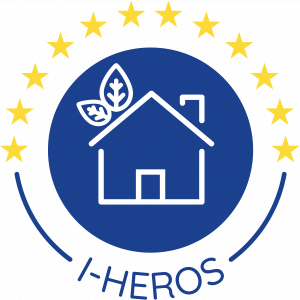
The different parameters that have the most impact on thermal comfort are: the air speed and temperature, humidity, the walls temperature, solar radiation, clothing, activity, age and health, etc. Especially in summer, comfort is achieved by controlling these parameters without necessarily having to use air conditioning.
Thermal standards defined Adaptive Thermal Comfort models for predict the conditions under which occupants are most susceptible to being comfortable in buildings. For all summer days, the summer comfort is verified hour by hour with this model. Anything above the upper limit will be considered as an hour of discomfort.

What to do to improve summer thermal comfort in Toulouse?

The internal contributions
The first element that can generate thermal energy is the use of the building and the equipment that the occupants may have (for example: cooker, lights, washing machine, etc.). Not considering the thermal comfort at the time of a renovation can lead to the need to resort to an AC system. It is essential to limit heat gain and dissipate it when possible (e.g. night ventilation).
Solar gain
Even if in Toulouse, solar gain is useful in winter to limit heating consumption, in summer it warms the air and the walls of the building. Coupled with the thermal insulation of ITE renovation solutions, the heat generated is trapped inside the building.
The solar protection of the windows avoids this problem. Different types of protection are possible depending on the orientation. A compromise between the size of the solar protection and the access to natural light must be sought. Indeed, a bad dimensioning of the solar protection can lead to the use of artificial lighting solutions which will generate internal contributions and electricity consumption. Another negative effect can also be the overconsumption of heating in winter.
How to properly size thermal inertia?
If the inertia is too important and the night temperature is too hot (ex: heat waves), the heat stored all along the day will not have time to dissipate during the night. The building will then gradually rise in temperature and instead of absorbing the daily temperature peak of the following day, the inertia will amplify it. The dimensioning of the thermal inertia in summer is thus strongly linked to the climate and the night ventilation. It is necessary to combine thermal inertia and thermal transmittance to optimize summer comfort and energy consumption.
Optimization of night ventilation
The night ventilation should help to unload the heat stored in the walls of the building. It is also a way to dissipate internal heat gains. The main drivers of this phenomenon are:
• Thermal draught: The warm and humid indoor air rises above the fresh air masses.
• Cross ventilation: The dominant winds induce a pressure differential which creates a draught between two facades of a building.
• Mechanical over-ventilation: The increased use of the existing mechanical ventilation system at night.
Climate and construction in Toulouse?
The study of the climatic rigour in this region of France points to the need for a high-performance heating system for the winter while protecting against the summer heat.
The Givoni diagram recommends, under the condition that the building can dispose of 100% of the bioclimatic resources available in Toulouse, the use of passive cooling solutions such as thermal inertia or ventilation.



